
PacWave Inks ‘Historic’ US Wave Power Purchase Deal
.S. grid for the first time.The agreement marks a major step for CalWave, which will deploy its xWave technology at the PacWave test site. The company said the project represents its move from research and development into commercial operations after previously exporting power only to a microgrid at the Scripps Institution of Oceanography during a 2021–22 open-ocean deployment.The five-year agreement, running from 2026 to 2030, enables BPA to purchase up to 20 MW of energy per hour from OSU. PacWave’s offshore test site does not always operate at full capacity, but the arrangement provides
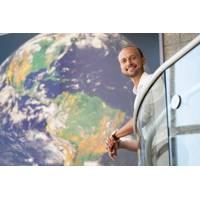
Researchers Link Antarctic Ice Loss to Subsurface “Storms”
ocean interactions to the early-career research team, said: “This study and its findings highlight the urgent need to fund and develop better observation tools, including advanced oceangoing robots that are capable of measuring suboceanic processes and associated dynamics.”Lia Siegelman of Scripps Institution of Oceanography at the University of California, San Diego joined Poinelli and Nakayama on this project. Funding was provided by NASA’s Cryospheric Sciences Program with support from the NASA Advanced Supercomputing Division
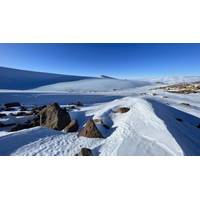
Scientists Discover Six Million Year Old Ice in Antarctica, Offers Unprecedented Window into a Warmer Earth
co-authors on the paper are: Julia Marks Peterson, Christo Buizert and Jenna Epifanio of Oregon State; Valens Hishamunda, Austin Carter and Michael Bender of Princeton; Lindsey Davidge, Eric Steig and Andrew Schauer, University of Washington; Sarah Aarons, Jacob Morgan and Jeff Severinghaus of Scripps Institution of Oceanography at University of California, San Diego; Andrei V. Kurbatov and Douglas Introne of the University of Maine; Yuzhen Yan of Tongji University; and Peter Neff of the University of Minnesota.COLDEX is supported by the NSF Office of Polar Programs; the Science and Technology
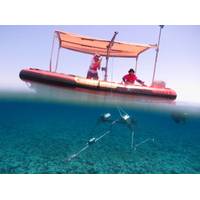
Lander Lab: Cost Efficiency of Baited Ocean Landers
; writes Clark in her paper, “the findings presented herein are applicable to global aquatic biodiversity and conservation monitoring programs.”Baited CamerasAutomatic time lapse cameras for benthic studies have been in use since the 1950’s by researchers such as Prof. John D. Isaacs, Scripps Institution of Oceanography/UCSD, and Dr. Harold E. Edgerton, Woods Hole Oceanographic Institution.WHOI’S Harold E. Edgerton (left) assists in deploying a tethered deep-sea camera system onboard Jacques-Yves Cousteau’s Research Vessel CALYPSO during Mediterranean fieldwork in 1953. Photo
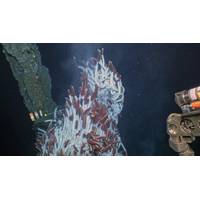
Hydrothermal Vent Temperatures Used to Forecast Eruptions
subtle but detectable temperature changes could offer the means to predict seafloor volcanic eruptions.Led by Thibaut Barreyre of the French National Centre for Scientific Research (CNRS) and University of Brest, with collaborators from Woods Hole Oceanographic Institution (WHOI), Lehigh University, and Scripps Institution of Oceanography, the study presents a 35-year time-series of temperature measurements from five hydrothermal vents along the East Pacific Rise, one of the most active segments and well-studied of the global mid-ocean ridge system.“Mid-ocean ridges are where much of Earth&rsquo
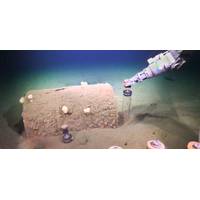
Barrels of Caustic Waste Found Off California
New research from UC San Diego's Scripps Institution of Oceanography reveals that barrels of caustic waste, thought to be related to the pesticide DDT, have created an extreme environment around them.Though the study’s findings can’t identify which specific chemicals were present in the barrels, DDT manufacturing did produce alkaline as well as acidic waste.“One of the main waste streams from DDT production was acid, and they didn’t put that into barrels,” said Johanna Gutleben, a Scripps postdoctoral scholar and the study’s first author. “It makes you

National Marine Sanctuary Foundation Welcomes Admiral Tim Gallaudet As New Trustee
the Pentagon as the Navy’s chief oceanographer, meteorologist, hydrographer, navigator, and senior liaison officer to the NOAA Administrator. He also has served on numerous Boards and Advisory Panels, including Force Blue, the Advisory Council for Project Recover, the Director’s Council for Scripps Institution of Oceanography, and the White House Ocean Research Advisory Panel, among others. Ahead of the United State's 250th anniversary and the National Marine Sanctuary Foundation’s 25th anniversary, Adm. Gallaudet’s contribution to the Foundation through his leadership

Research Vessels: A Conversation with Bruce Applegate of UNOLS
sea. The University-National Oceanographic Laboratory System (UNOLS) is the central organization that provides scientists with access to advanced research ships and technology to explore the world's oceans. We recently spoke with Bruce Applegate, Chair of the UNOLS Council and Associate Director at Scripps Institution of Oceanography, to explore UNOLS’ operations and future plans.Understanding UNOLS and the U.S. Academic Research FleetContrary to common misconception, UNOLS does not own or operate a fleet. Instead, it facilitates coordination among the U.S. Academic Research Fleet (ARF). ARF

Padilla, Murkowski Introduce Bill for Atmospheric River Forecasting
to advance forecasts of atmospheric rivers to enable more flexible and resilient water management, improved warning around flooding, and overall improvements to public safety," noted Marty Ralph, Founding Director of the Center for Western Weather and Water Extremes at UC San Diego’s Scripps Institution of Oceanography
 December 2025
December 2025





